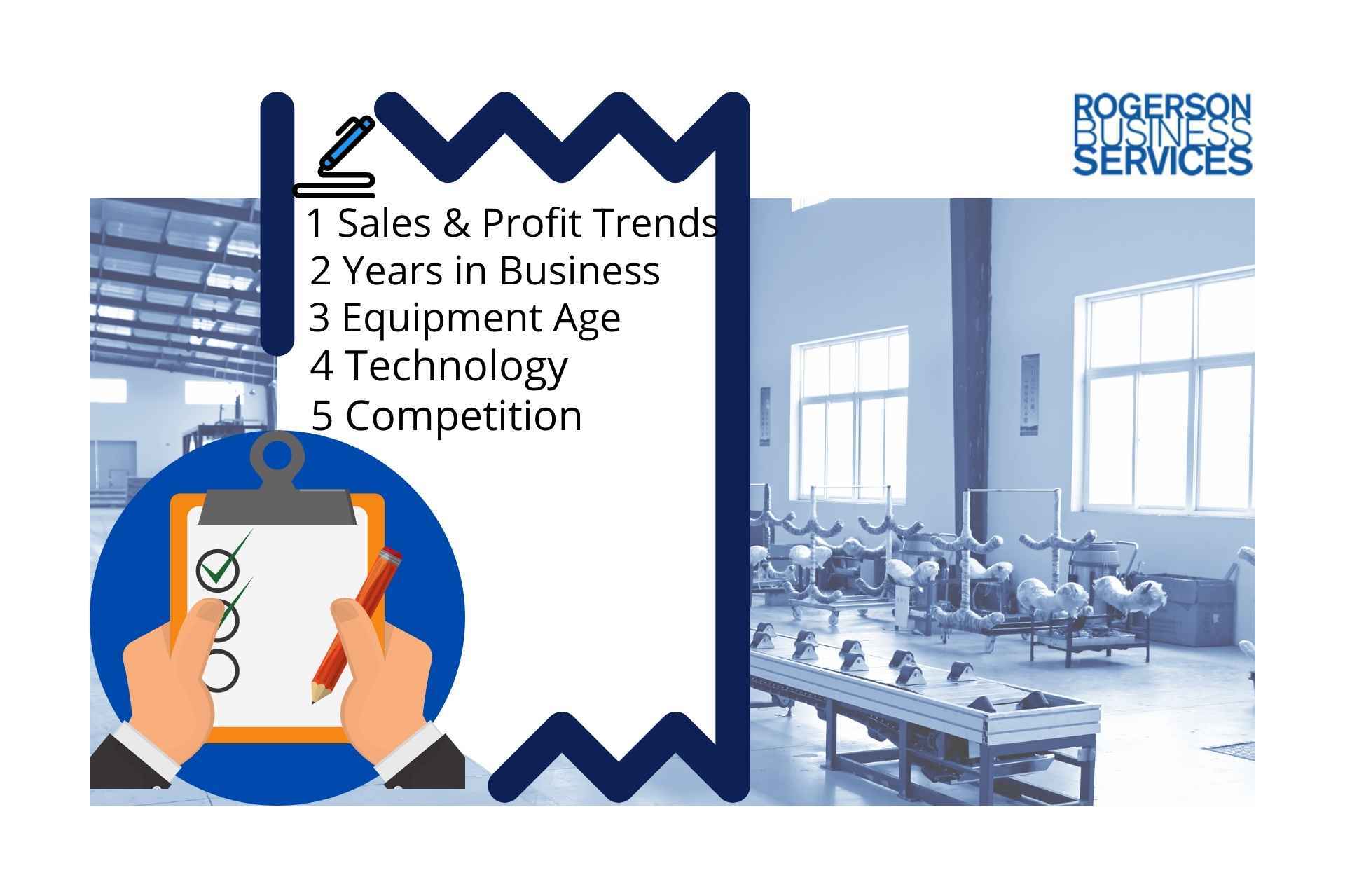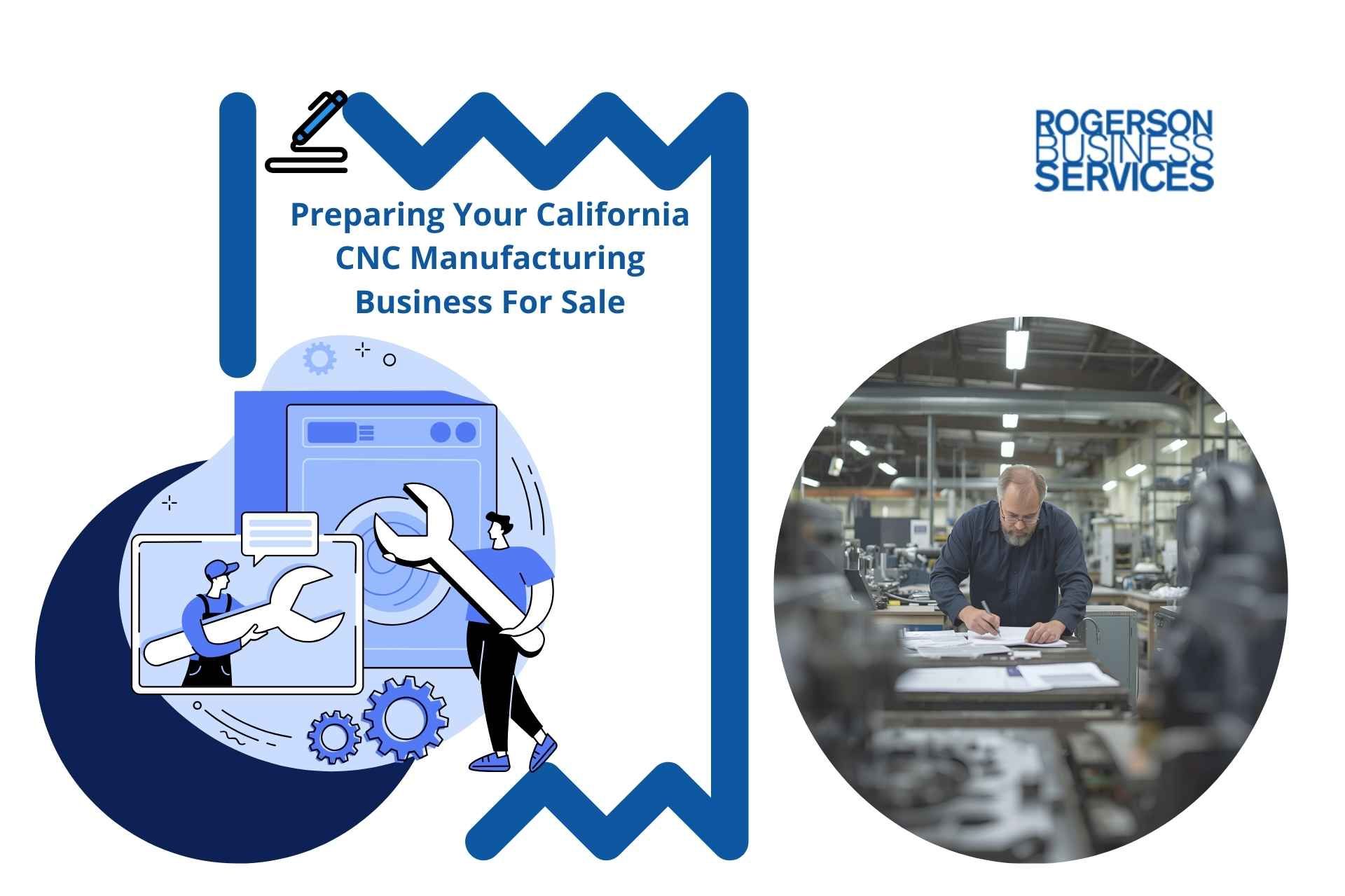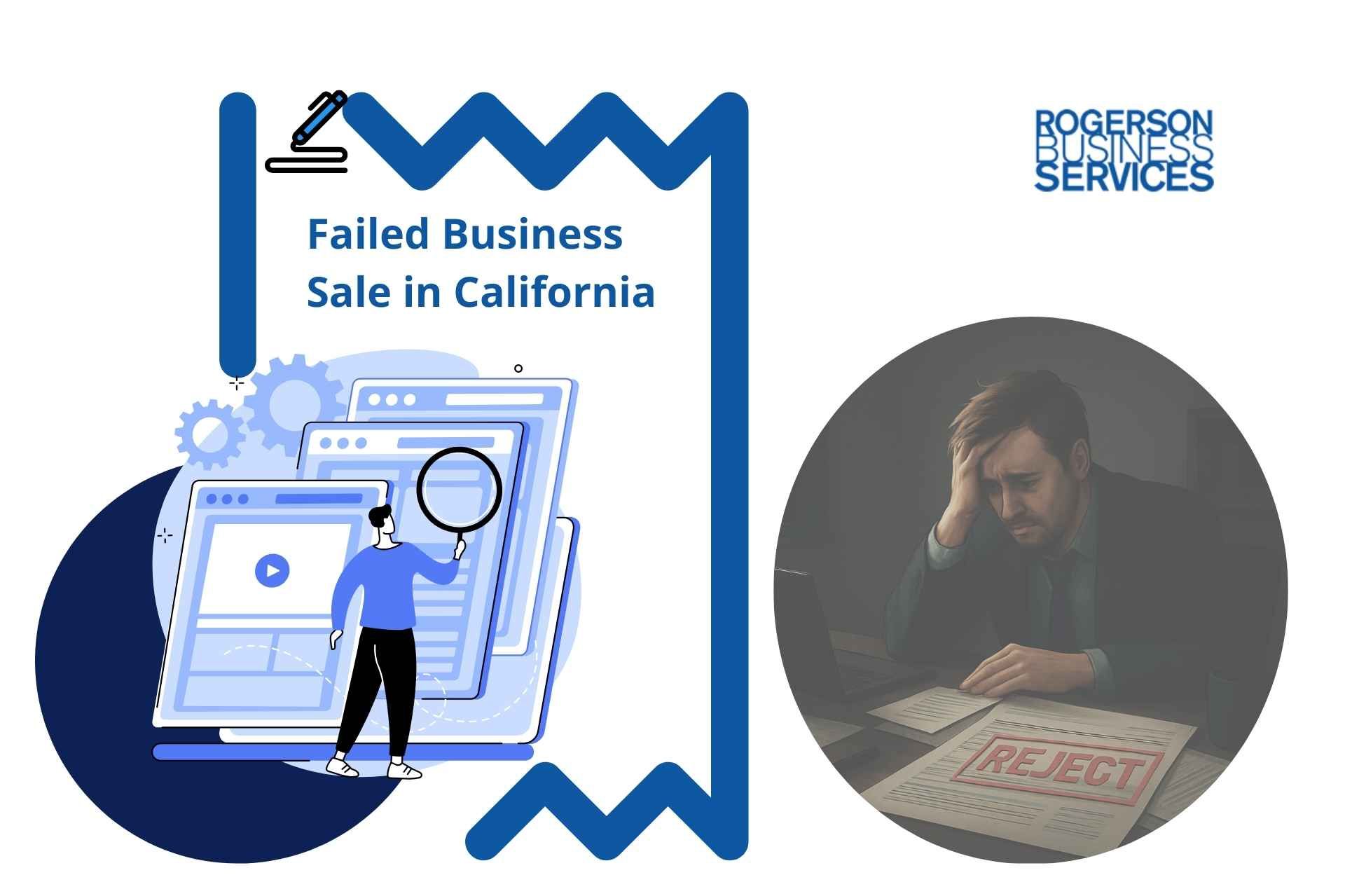How to Value a Manufacturing Business: Use Asset Approach
How to Value a Manufacturing Business
10 Main factors to consider:
- One: Trends in sales and profitability
- Two: Years in business
- Three: Equipment condition and age
- Four: Technology
- Five: Competition
- Six: Number of products produced
- Sever: Capacity constraints
- Eight: Inventory on hand and work in progress
- Nine: Raw materials
- Ten: Rented or owned property

If you are valuing a manufacturing business, you must use the asset approach, market approach, or income approach. However, the asset approach is the best method to help value a manufacturing company.
What Is the Asset Approach?
A valuation is an assessment of the net worth of a company. In any business, there are assets, which are properties, equipment, and other revenue-generating entities. Liabilities are costs incurred by doing business. The asset-based approach calculates a company's value as its assets minus its liabilities. The asset approach helps value a manufacturing business, as these are typically asset-intensive operations.
We have dedicated a whole blog post covering: how to value a business, and another one about a question that most manufacturing owners in the lower middle market companies ask: if I sell a business how much tax will I need to pay?
Factors to Consider for Manufacturing Business Valuation
When determining the worth of a manufacturing company using the asset valuation method formula, there are several important factors to consider:
- Trends in sales and profitability: This is the amount of revenue generated by the company's sales. It also takes into account the company's current and future projected net profit projections.
- Years in business: This allows you to accurately assess the company's current state and forecast its near-term growth.
- Equipment condition and age: This determines the value of equipment and helps to estimate the number of remaining useful years.
- Technology: You must consider how well this meets your current and future manufacturing needs.
- Competition: Lack of competition can be a valuable asset, but too much is a liability. You must understand the market to know on which side of the valuation equation this belongs.
- Number of products produced: Each product contributes to the overall revenue and costs of the company. A single product allows resources to be focused but having several products generates multiple income streams.
- Capacity constraints: Although market demand is subject to change, the company's capacity concerning market demand will determine whether or not future expansion will be needed.
- Inventory on hand and work in progress: This is generally an asset as it is ready for sale, but storage costs can be a liability.
- Raw materials: These contribute to the company's asset value because it represents potential sales revenue.
- Rented or owned property: This is an asset because it provides a site for manufacturing, but rent or mortgage due is a liability.
What Is My Manufacturing Company Worth?
Before you consider these 5 steps when selling your manufacturing business in California, there are a few things you can do to make it more appealing to potential buyers:
- Invest in patents: A patent is a license that grants the owner exclusive control over a product or process. A manufacturing company with a patent on its products or technology is unquestionably more valuable in the eyes of buyers and will command a higher selling price. Start with consulting your legal team if you want to get a patent.
- Various sources of income: Businesses rely on revenue to stay in operation. If you make only one product, a decrease in its demand can be catastrophic. Businesses that offer multiple products or services are more valuable to buyers because they can generate multiple income streams. As a result, the company's survival is not solely dependent on a single product.
- Management of operations: A company's success is heavily reliant on its leadership and organizational structure. In general, businesses that can continue to function in the absence of management are typically more valuable than those whose operations are dependent on the manager at all times. This is particularly important if there will be a change in leadership once sold. Here are top certifications to get for your key management team.
- Market trends and new technology: Marketing trends, like consumer tastes, are ever-changing. A company's ability to adapt to this and continue to thrive is a huge selling point for potential buyers. It is beneficial to stay updated on current trends to remain ahead of the curve as a business owner.
- Competition: The presence of competitors is a key factor in determining the value of your company. Competitors influence the market demand and supply curve. A company with product demand exceeding product supply is unquestionably more valuable to potential buyers than one whose supply exceeds its demand.
Hiring a Manufacturing Business Broker
A merger and acquisition advisor, also known as an M&A firm, is a company that specializes in guiding business owners through the complex process of mergers and acquisitions. Manufacturing Business Brokers can help you determine the adjusted net asset value of your business and also make the process more manageable in the following ways:
- Use your resources efficiently: Putting together the paperwork required to evaluate and sell a business requires a substantial amount of paperwork that can be confusing and time-consuming. An M&A firm has the necessary knowledge and experience to assist you in locating the documents needed to value and sell your business, leaving you time to manage other aspects of the sale.
- Identify and evaluate potential buyers: The task of finding a buyer for your business can be tricky, and even when you have someone in mind, how do you know they will be the right fit? An M&A firm will have industry experience and connections to assist you with this step of the transaction.
- Managing the financial responsibilities of closing the sale: Many business owners sell their companies in deals that are not profitable for them. An M&A firm can help prevent you from making this mistake by reviewing the potential offers and ensuring that the terms and conditions are favorable to you. Buyers can also get cold feet even after making an offer, but having an experienced M&A firm in your corner can help ensure that the sale closes successfully.
Find out more about how a manufacturing business broker can help you with mergers and acquisitions in the lower middle market segment.
Successfully Valuing and Selling a Manufacturing Business with the Asset-Based Approach
Valuing your manufacturing business can be difficult, but it is necessary to successfully sell it for a fair price. There are numerous business valuation methods, but the best for a manufacturing business is the asset-based approach.
If you are considering
selling your business, this process can feel overwhelming, so having the expertise of an M&A firm can be very helpful.
Choose a group with plenty of industry experience and a strong track record of successful business acquisitions and sales professional to ensure your transaction goes through without a hitch.
If you are a retiring business owner looking to exit your lower middle market manufacturer in California, here are six tips to get you started:
1. Don't wait until the last minute to start planning your exit. The process of selling a lower middle market manufacturing business can take a long time, so it's important to start early.
2. Have a clear idea of what you want to get out of the sale. Know your goals and what you're willing to negotiate.
3. Know what's your company's worth. This is an essential step to take when planning to sell your manufacturing business in California.
4. Choose the right type of buyer. Not all buyers are created equal, so do your research and find the right one for your business.
5. Be prepared for a lot of due diligence. M&A buy-side due diligence is when buyers will want to know everything about your business, so be ready to provide documentation and answer questions.
6. Be flexible with the terms and conditions of the deal. It's important to be open to negotiation to get the best possible deal for your business.
Rogerson Business Services, also known as, California's lower middle market business broker is a sell-side M&A advisory firm that has closed hundreds of lower middle-market deals in California. We are dedicated to helping our clients maximize value and achieve their desired outcomes.
We have a deep understanding of the Californian market and an extensive network of buyers, which allows us to get the best possible price for our clients. We also provide comprehensive support throughout the entire process, from initial valuation to post-closing integration.
Our hands-on approach and commitment to our client's success set us apart from other firms in the industry. If you consider selling your lower middle market manufacturing business, we would be honored to help you navigate the process and realize your goals.
If you have decided to value and then sell your lower middle market manufacturing company or still not ready, get started here, or call toll-free 1-844-414-9600 and leave a voice message with your question and get it answered within 24 hours. The deal team is spearheaded by Andrew Rogerson, Certified M&A Advisor, he will personally review and understand your pain point/s and prioritize your inquiry with Rogerson Business Services, RBS Advisor.
Go to the next article: Part of tips to selling manufacturing business in California series ->
Hey there! Can we send you a gift?
We just wanted to say hi and thanks for stopping by our little corner of the web. :) we'd love to offer you a cup of coffee/tea, but, alas, this is the Internet.
However, we think you'll love our email newsletter about building value and properly position your company before transition/exit your business ownership.
As a special welcome gift for subscribing, you'll also get our helping and educational guides, tips, tutorials, etc.. for free.
It's filled with the best practices for retiring serial business owners like Dan Gilbert, Larry Ellison, Warren Buffett, and many more.
Just sign up for our emails below.


